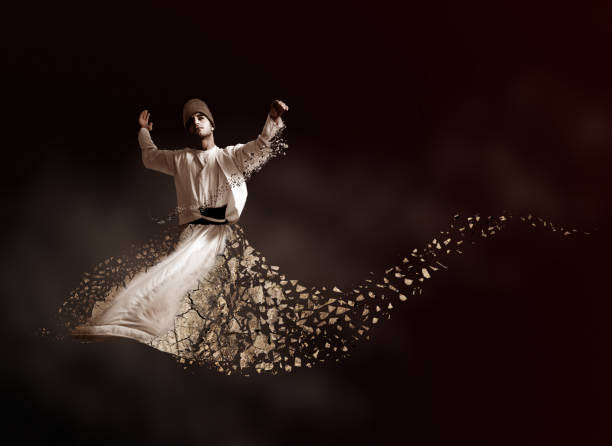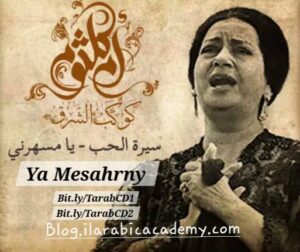Spread the love
Sama’: Music and the Sufi Mystical Experience
There is probably no Sufi practice that has historically been more evident and more controversial than sama’, or listening to music as a means of altering one’s state of consciousness. Sama’ challenged the harmonious relationship between Sufis and “ordinary believers” because it involved the courting of the divine through the performance of music, which in turn led to public expressions of ecstasy. In the early days of Sufism, practitioners faced a dilemma: to practice and defend sama` was to assert the supremacy of the love relationship over all other religious obligations. At the same time, as devout Muslims Sufis acknowledged that both music and love and, indeed, every aspect of life had to be experienced within an Islamic worldview upholding the Qur’an, the sunnah or Traditions of the Prophet and shari’a or rudiments of Muslim law.
The dilemma premised, even as it privileged, the ambiguity of the Beloved/lover relationship. On what basis could a continuing and mutually reinforcing relationship be posited between the divine and the human? Its fundamental precondition was separation. Separation was mandated, for without separation there could be no love relationship, and yet separation was also minimized, for union was the ultimate goal of every Sufi adept, just as proximity to the Beloved was the constant refrain of medieval Muslim poets.
As defined by these early thinkers, Sama` may relate to the spiritual progress of a Muslim mystic or Sufi adept in one of three ways: (1) it may be totally excluded as inappropriate to Islamic teaching – mystical or non-mystical; (2) it may be accepted as a penultimate stage on the mystical ladder leading to ontological unity, i.e., perfection, or (3) it may be viewed as the top rung on the ladder, itself the ultimate mystical experience when properly pursued.
Which valuation of sama` was to be accepted and why? For proponents of the second approach, music was related to the epistemological rather than to the metaphysical core of Muslim mystical experience. Music was said to help the lover in attaining the ecstasy derived from imminent union with the Beloved, but it itself was not thought to be coextensive with ecstasy. Because it could be confused with human love by the inexperienced beginner or wayward outsider, proponents of the second approach argued that sama` should not be made available to the raw beginners but only the mature trekkers on the Path to Truth. Not sensual delight but spiritual catharsis was the goal.
Those who supported the third approach had no such reservations. For them music was the sine qua non of Islamic mysticism. It not only helped the lover to attain a state of ecstasy in the presence of the Beloved, but it itself was integral to the ecstatic moment. Ideally sama` absorbed the human listener into the place of music till there remained only the song. While there were guidelines governing correct conduct, the risk to potential listeners was downgraded since the benefits of losing one’s self through sama` were viewed as at once limitless in scope and also unobtainable by other means.
The variant emphases between (2) and (3) were major enough to spark a debate within the fold of Sufism. The debate became influential among Sufi orders and the Muslim community at large. It took on different local expressions from the ‘Isawiyya trance dances in Morocco and Algeria (see e.g., Gilbert Rouget, Music and Trance 1985: 310-314) to exuberant musical sessions in Iran and Indonesia. The one most popularized in South Asia became known as qawwali. It developed into a recurrent congregational expression of Sufi mystical devotion in most of the major urban centers of India and Pakistan. During qawwali performances verses were chanted in the presence of a group of like minded men, all of whom were presumed to share the same lofty motives for convening to listen to what in Arabic is termed al-sawt al-hasn or “the beautiful voice”.
With the advent of modern technology the beautiful voice that delights Sufis and inspires adepts has become available on the Internet. What happened in pre-modern times under the rubric of qawwali, music sung within the hospice of a Sufi master, can now be found online on YouTube. Such commercial popularity is not equivalent to spiritual advancement, and while some Sufis would question whether or not the uninitiated can even grasp a fraction of the deep layers of meaning through listening to soundtracks, others have forged ahead. The success of present-day practitioners of qawwali such as the Sabri Brothers and Nusrat Fateh Ali Khan of Pakistan has gone far beyond the confines of Asian tomb sites and public gatherings.
The first to appreciate these performers as transnational artists were ethnomusicologists in Europe, who esteemed them for their musical dynamism as much as for their recognizable spiritual qualities. Yet it is Nusrat Fateh Ali Khan who has surpassed all his predecessors, as in this inspirational piece that can be found readily on YouTube. Nusrat oriented his musical style toward audiences unable to understand his texts, or even to recognize his music as either Muslim or South Asian.
In the Hollywood film “Dead Man Walking”, for instance, Nusrat Fateh Ali Khan blends his voice with indigenous American bluegrass chords, to produce an unforgettable but also unrecognizable score of background music. Few of the thousands who saw that film even knew that there was a Muslim artist, much less a Sufi and certainly not a Chishti Sufi musician, providing the tone to some of its most haunting passages. Examples of this music include tracks 5 and 12 of the movie’s soundtrack.
The dilemma premised, even as it privileged, the ambiguity of the Beloved/lover relationship. On what basis could a continuing and mutually reinforcing relationship be posited between the divine and the human? Its fundamental precondition was separation. Separation was mandated, for without separation there could be no love relationship, and yet separation was also minimized, for union was the ultimate goal of every Sufi adept, just as proximity to the Beloved was the constant refrain of medieval Muslim poets.
As defined by these early thinkers, Sama` may relate to the spiritual progress of a Muslim mystic or Sufi adept in one of three ways: (1) it may be totally excluded as inappropriate to Islamic teaching – mystical or non-mystical; (2) it may be accepted as a penultimate stage on the mystical ladder leading to ontological unity, i.e., perfection, or (3) it may be viewed as the top rung on the ladder, itself the ultimate mystical experience when properly pursued.
Which valuation of sama` was to be accepted and why? For proponents of the second approach, music was related to the epistemological rather than to the metaphysical core of Muslim mystical experience. Music was said to help the lover in attaining the ecstasy derived from imminent union with the Beloved, but it itself was not thought to be coextensive with ecstasy. Because it could be confused with human love by the inexperienced beginner or wayward outsider, proponents of the second approach argued that sama` should not be made available to the raw beginners but only the mature trekkers on the Path to Truth. Not sensual delight but spiritual catharsis was the goal.
Those who supported the third approach had no such reservations. For them music was the sine qua non of Islamic mysticism. It not only helped the lover to attain a state of ecstasy in the presence of the Beloved, but it itself was integral to the ecstatic moment. Ideally sama` absorbed the human listener into the place of music till there remained only the song. While there were guidelines governing correct conduct, the risk to potential listeners was downgraded since the benefits of losing one’s self through sama` were viewed as at once limitless in scope and also unobtainable by other means.
The variant emphases between (2) and (3) were major enough to spark a debate within the fold of Sufism. The debate became influential among Sufi orders and the Muslim community at large. It took on different local expressions from the ‘Isawiyya trance dances in Morocco and Algeria (see e.g., Gilbert Rouget, Music and Trance 1985: 310-314) to exuberant musical sessions in Iran and Indonesia. The one most popularized in South Asia became known as qawwali. It developed into a recurrent congregational expression of Sufi mystical devotion in most of the major urban centers of India and Pakistan. During qawwali performances verses were chanted in the presence of a group of like minded men, all of whom were presumed to share the same lofty motives for convening to listen to what in Arabic is termed al-sawt al-hasn or “the beautiful voice”.
With the advent of modern technology the beautiful voice that delights Sufis and inspires adepts has become available on the Internet. What happened in pre-modern times under the rubric of qawwali, music sung within the hospice of a Sufi master, can now be found online on YouTube. Such commercial popularity is not equivalent to spiritual advancement, and while some Sufis would question whether or not the uninitiated can even grasp a fraction of the deep layers of meaning through listening to soundtracks, others have forged ahead. The success of present-day practitioners of qawwali such as the Sabri Brothers and Nusrat Fateh Ali Khan of Pakistan has gone far beyond the confines of Asian tomb sites and public gatherings.
The first to appreciate these performers as transnational artists were ethnomusicologists in Europe, who esteemed them for their musical dynamism as much as for their recognizable spiritual qualities. Yet it is Nusrat Fateh Ali Khan who has surpassed all his predecessors, as in this inspirational piece that can be found readily on YouTube. Nusrat oriented his musical style toward audiences unable to understand his texts, or even to recognize his music as either Muslim or South Asian.
In the Hollywood film “Dead Man Walking”, for instance, Nusrat Fateh Ali Khan blends his voice with indigenous American bluegrass chords, to produce an unforgettable but also unrecognizable score of background music. Few of the thousands who saw that film even knew that there was a Muslim artist, much less a Sufi and certainly not a Chishti Sufi musician, providing the tone to some of its most haunting passages. Examples of this music include tracks 5 and 12 of the movie’s soundtrack.
Resources:
Arabic sufism. Ahmed safwat
Anne Lawrence, Duke University
Check out our course bit.ly/ARABICMEDITATIONCOURSE
Our book : Bit.ly/ARABICEGYPTMEDITATION







More Stories
Free Download: “Don’t Be Sad” – Arabic Psychological Healing for Depression & Anxiety Download Gratuito: “Não Fique Triste” – Cura Psicológica Árabe para Depressão e Ansiedade
New Tarab Song translation – Ban Aleya Naga .
Tamally ma’ak Egyptian Arabic Song translation